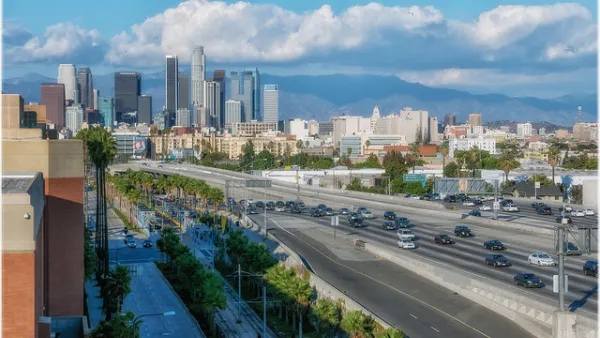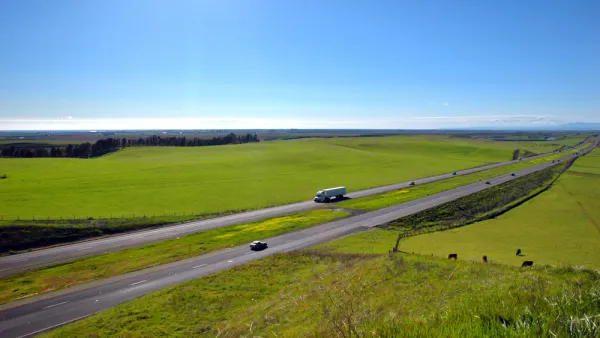Essentially that's what UC Davis, Yale, and MIT researchers found among California families who purchase very fuel efficient vehicles—they also pair them with gas hogs. If your family owns two vehicles, do you meet the profile?

The researchers found the pairing of the opposite types of vehicles by studying California Department of Motor Vehicle trends for two-car households over several years, report Peter Fimrite and Michael Cabanatuan for the San Francisco Chronicle on Sept. 27.
If people buy a more fuel-efficient car, down the road when they replace one of their cars, the car they buy is going to be less fuel-efficient,” said lead author David Rapson, an associate professor of economics at the UC Davis Department of Economics and co-director of the Davis Energy Economics Program. “So the effect of fuel economy standards is reduced.”
The other finding was the rebound effect (also referred to as the energy efficiency paradox) that often comes with the purchase of fuel-efficient vehicles—they are driven more often than had they been less fuel efficient.
These tendencies reduce by up to 60 percent the expected future gas savings from increased fuel economy in two-car households, said the study, which was funded by the California Air Resources Board (CARB).
As someone who has dedicated his career to trying to figure out solutions to climate change, this is troubling,” Rapson said. It means “there is a strong force that we didn’t know about before that is going to erode the benefit of forcing people to buy more fuel-efficient cars.”
The study, released Sept. 19, uses a psychological term to describe this pairing in its title: "Attribute Substitution in Household Vehicle Portfolios [pdf]".
The results don’t mean humans are naturally greedy or hedonistic, Rapson said. In fact, the behavior of car buyers fit “attribution substitution” patterns displayed in previous studies. For instance, households with two children of the same gender are more likely than families with a boy and a girl to have a third child.
Law of unintended consequences
Rapson concludes that the tendency to pair the gas guzzler with the gas sipper, and the tendency to drive the latter more often than one otherwise would, suggests that CARB needs to consider these human tendencies when setting standards in their clean vehicles programs.
“Unintended consequences like this need to be taken into account when making policy,” he said. “On average, fuel economy standards are putting more fuel-efficient cars in households. That can be good if it reduces gasoline use. But if it causes people to buy a bigger, less fuel-efficient second car to compensate, this unintended effect will erode the intended goals of the policy."
Price signals needed
The findings points to the limits of reducing greenhouse gas emissions by regulations alone. "We don’t suggest getting rid of fuel economy standards and doing nothing else,” Rapson told the UC Davis News..
“But our conservation policies need to be effective. A more promising solution is to put a price on carbon, such as what California is doing with cap and trade. It produces economic incentives that evidence shows will reduce carbon emissions."
Cap and trade adds about 12 cents to a gallon of gas in California, according to Ross Brown of the Legislative Analyst's Office.
Another pricing option would be to either supplement or replace the current Clean Vehicle Rebate Project with a "feebate" that would not only incentivize zero-emission vehicles, but also place a surcharge on gas hogs, so consumers might consider the fuel economy of that "second vehicle."
FULL STORY: Fuel-efficient cars often paired with gas guzzlers, study finds

National Parks Layoffs Will Cause Communities to Lose Billions
Thousands of essential park workers were laid off this week, just before the busy spring break season.

Retro-silient?: America’s First “Eco-burb,” The Woodlands Turns 50
A master-planned community north of Houston offers lessons on green infrastructure and resilient design, but falls short of its founder’s lofty affordability and walkability goals.

Delivering for America Plan Will Downgrade Mail Service in at Least 49.5 Percent of Zip Codes
Republican and Democrat lawmakers criticize the plan for its disproportionate negative impact on rural communities.

Test News Post 1
This is a summary

Test News Headline 46
Test for the image on the front page.

Balancing Bombs and Butterflies: How the National Guard Protects a Rare Species
The National Guard at Fort Indiantown Gap uses GIS technology and land management strategies to balance military training with conservation efforts, ensuring the survival of the rare eastern regal fritillary butterfly.
Urban Design for Planners 1: Software Tools
This six-course series explores essential urban design concepts using open source software and equips planners with the tools they need to participate fully in the urban design process.
Planning for Universal Design
Learn the tools for implementing Universal Design in planning regulations.
EMC Planning Group, Inc.
Planetizen
Planetizen
Mpact (formerly Rail~Volution)
Great Falls Development Authority, Inc.
HUDs Office of Policy Development and Research
NYU Wagner Graduate School of Public Service





























